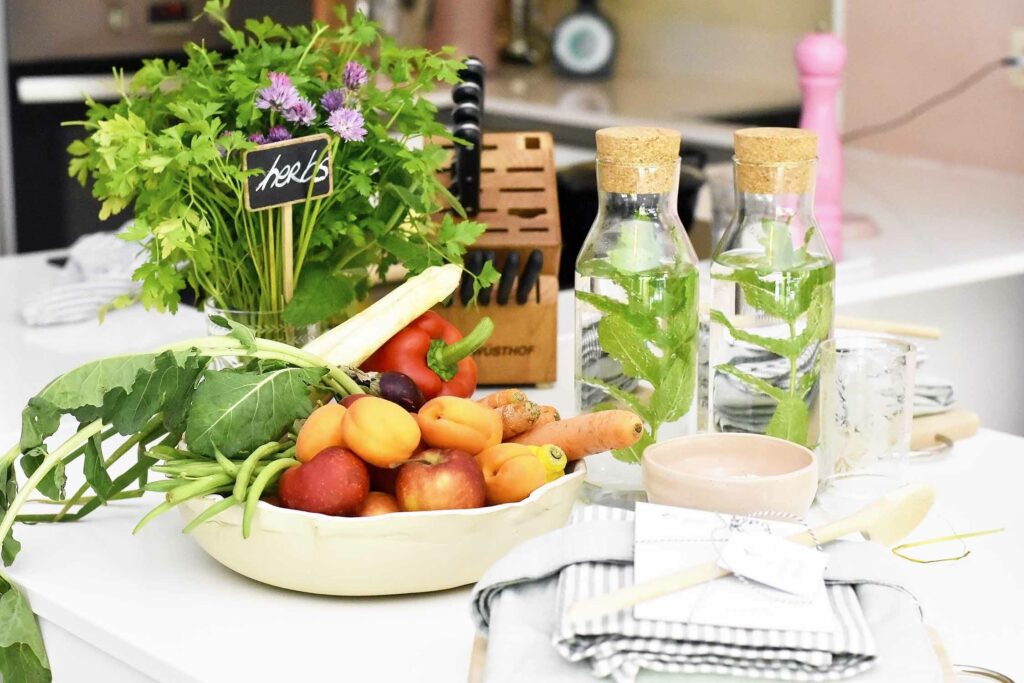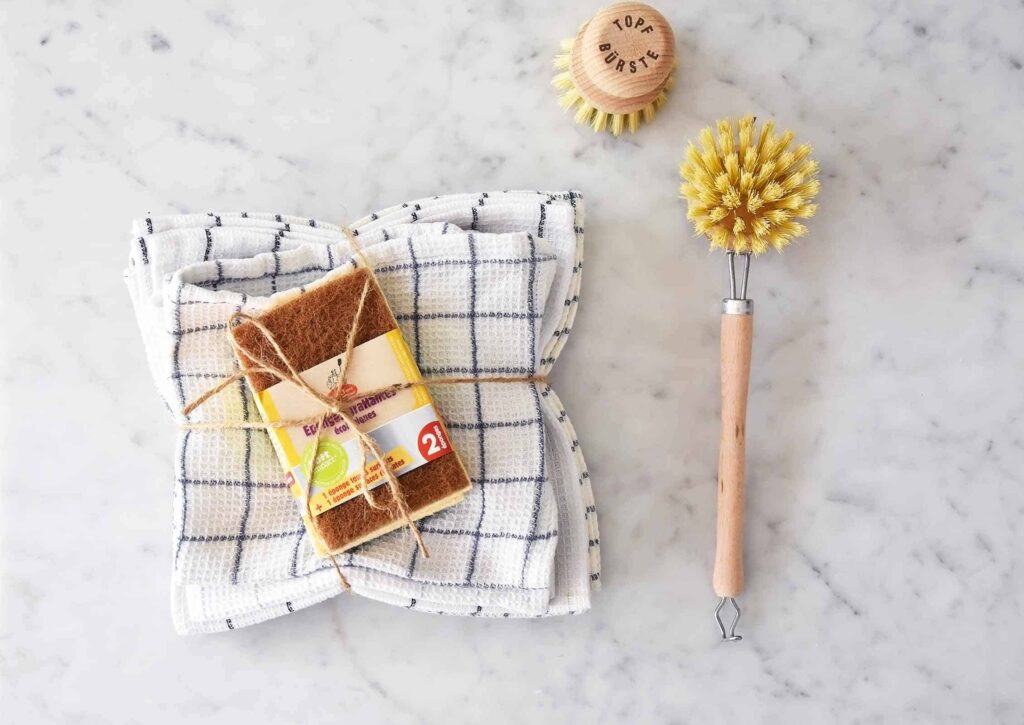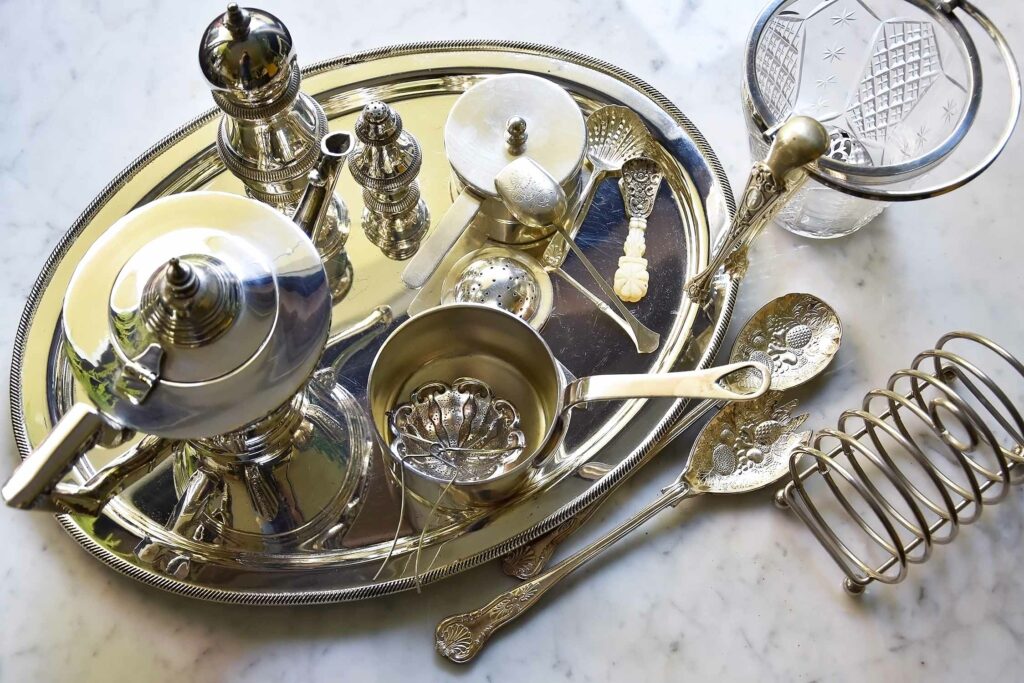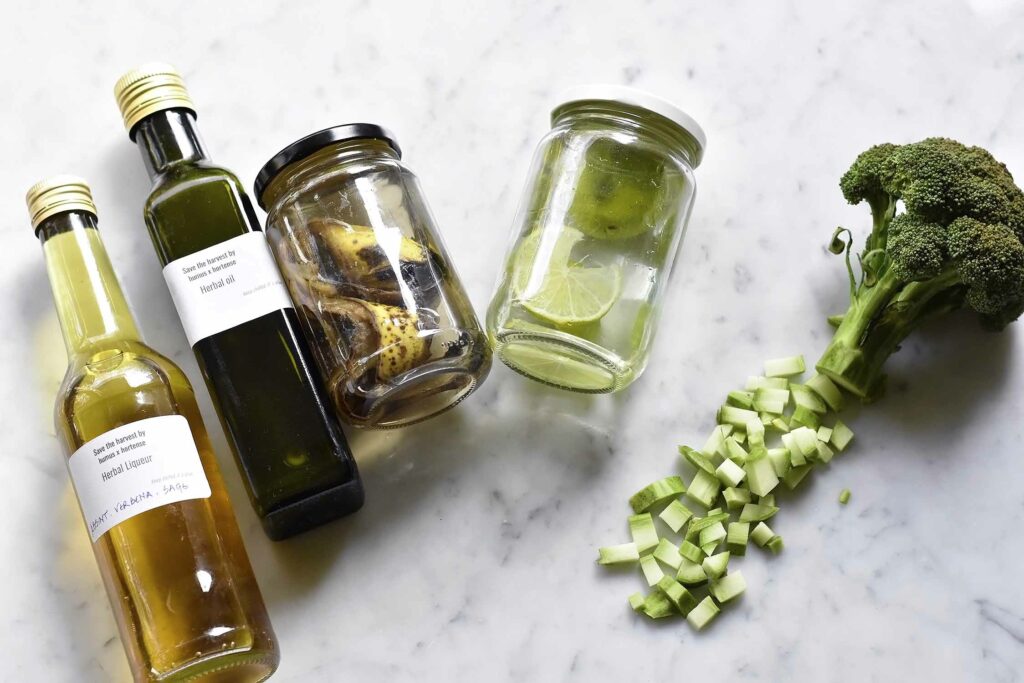Zero waste is a buzz word these days but it’s much more than that. I can no longer deny I get upset with the images of those poor oceans creatures stuck in a sea of plastic. The amount of waste I produce every week includes a LOT of plastic packaging. It is all going to a landfill somewhere, where it degrades over the next 1000 years into micro-plastics that seep into our earth, water and oceans and therefor in our food. YUK – I had enough!
RESEARCH – LEARN – ACT – I already made 15 swaps in my kitchen. See the article HERE. I am now going to tackle KITCHEN WASTE and PLASTIC more specifically.
I read a few very, eyeopening, useful books I highly recommend: “Zero waste home” by Bea Johnson and “Waste not” by Erin Rhoads. I follow several IG accounts with lots of tips, to name but a few: the.eco.warrior , thezerowasteguide, eatyourselfgreen, sustainable.collective, wastefreeplanet. By researching online at the Brussels environment and the Brussels good food websites for more tips I found they were looking for sustainable ambassadors and I applied and got selected to become a Sustainable Ambassador for Brussels! How cool is that?!
If you live in Belgium mark your calendars as Sunday 2 June there will be a huge environmental festival, more details to follow.
STOP PLASTIC WASTE – I read that the 5 most common wastes found in the ocean are :
- cigarette buds
- food wrappers and containers
- plastic bottles
- plastic bags
- caps and lids
I don’t smoke but I am for sure guilty of the other offenders. So I will reduce my plastic waste, not just recycle. I want to buy things NOT wrapped and reduce buying packaging in everything I can. In Belgium we have a push the month of May to go plastic free: #meiplastiekvrij. It’s going to be hard cause now that I look at it, EVERYTHING is wrapped in PLASTIC.
STOP FOOD WASTE – food waste is the most common material found in landfills, it sits there and emits a substantial amount of harmful methane gas . Only 3% of our food waste is recycled while this should be the easiest to do. When you compost or rot your veg and fruit scraps you enrich the soil, help retain water, encourage beneficial bacteria and fungi that can suppress plant diseases. I will start composting on my urban terrace and share my experiences with you.
Talking about waste is not sexy, yet I will prove to myself that I, a high-heel wearing, good-food lover and urban creature of comfort, can also be green and reduce waste! And IF I CAN, THAN YOU CAN TOO!
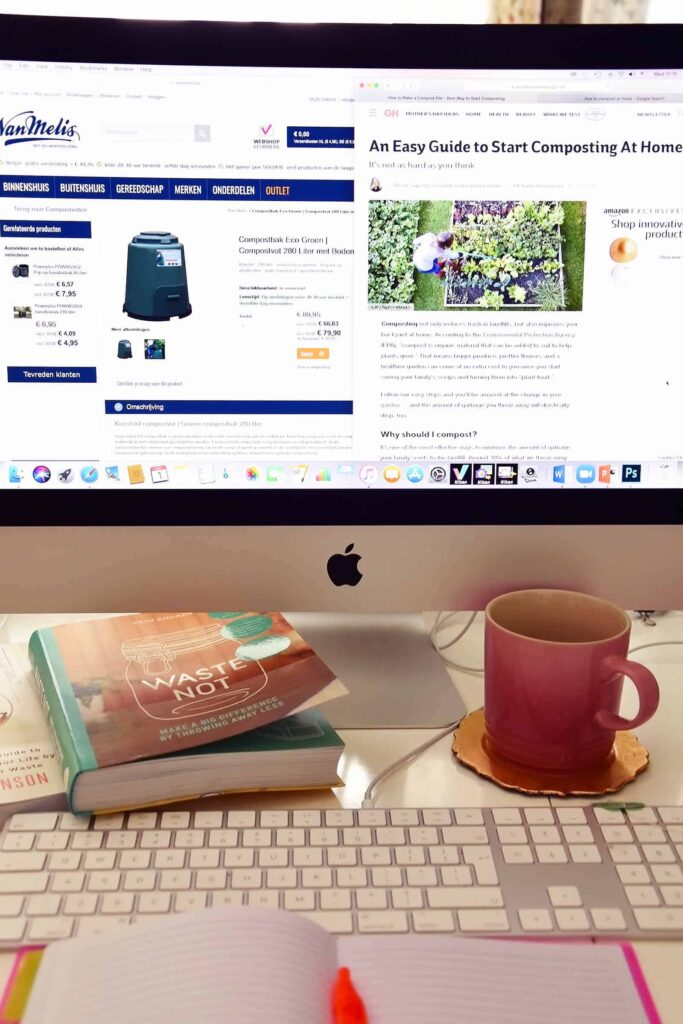
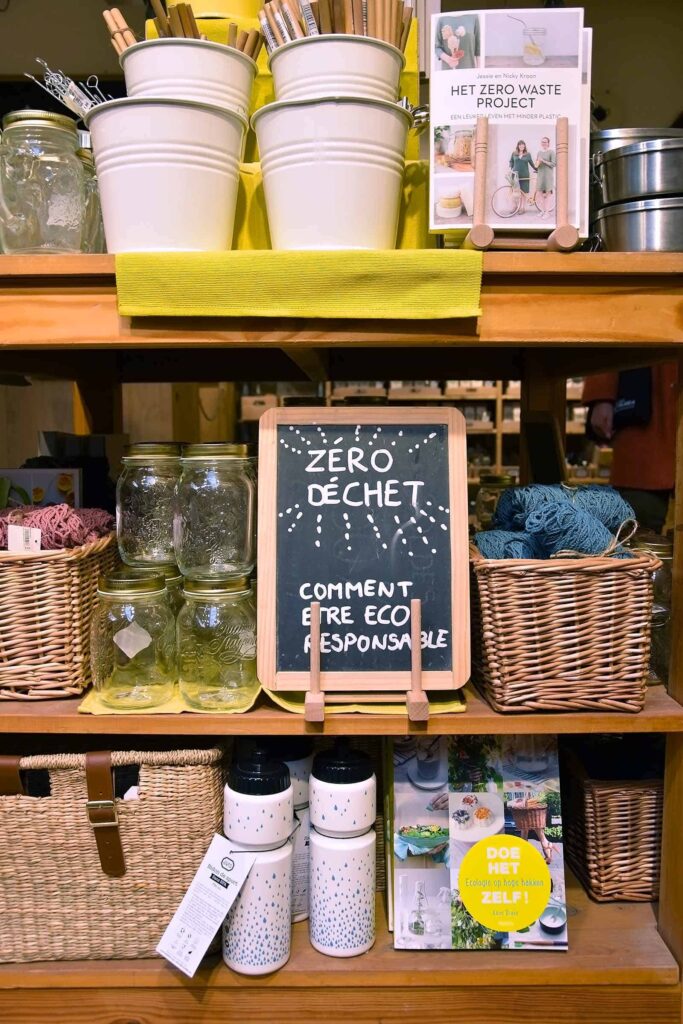
So here MY 10 GOALS for reducing my kitchen waste:
1. SAVE VEG SCRAPS FOR BROTH – this is sooo easy I don’t know why I never thought of this myself. You are always left with a bit of extra onion, carrot tops or some flimsy herbs. I added a jar in my freezer, where I will add now these veg and herbs uncooked scraps and when full make lovely stock or broth from it.
2. COMPOST – food waste like carrot tops and potato peels I already dumped in my large planter on my terrace in winter but I want to look into actual composting. Now you can only compost veg and fruit not animal based waste as that will bring in the rodents.
Step 1: I got a counter top stainless steel compost bin. This bin will collect my daily scraps and than I will bring it to the compost bin outside.
Step 2: I am looking into creating my own small compost bin outside (meaning getting a tub with or without worms in it).
My neighbourhood has no shared composting space yet but you can check your hood first. I am worried about the smell in summer and keeping it alive especially when I am traveling. I will learn more and give it a go. I will share it on my IG and FB stories.
![]()
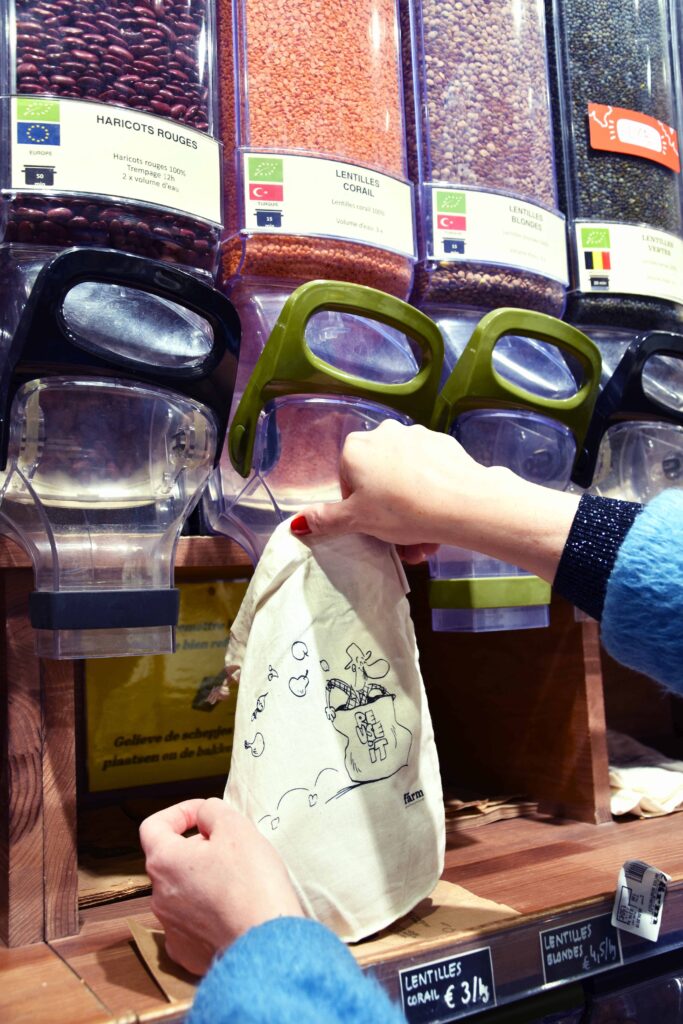
3. SHARE & STORE FOOD PROPERLY – I sort of already do this when I bake or have extra soup, I bring it in the office and donate to my colleagues. I think I can increase that liken before I travel to bring in produce to share versus letting it go to waste. I ‘ve a tiny freezer so I need to prioritize what to store, I can be better at organizing that as well. And want to learn more about storing in my fridge.
4. REDUCE SINGLE-USE PLASTIC – when analyzing my trash in my recycling bin I found water and soda bottles and a LOT of plastic packaging from vegetables, fruit, fish and poultry. Although I already use re-usable bags for fruit and veg, some are indeed still wrapped in plastic at the supermarket but not at the organic supermarket or farmers market. I will look closely at reducing packaging waste by buying where there is none. Also I already got rid of the bzillion ziplock bags I trashed and the clingfilm. I got some silicon and wax re-usable alternatives to replace those.
5. BUY BULK – this means you buy dry ingredients just the amount you need from a shop that bought ingredients in bulk i.e. in large quantities. They sell them for you in easy-to-use cylinders where you can fill up a container or a bag. This reduces need for individual packaging. I do shop at organic stores but have not yet brought in my own jars to fill up at the bulk dry-goods counter. I am keeping my used jars of jam and stock versus recycling them in the neighbourhood bin. I have a large collection of jars to use for bulk-buy and storing. I made a list of my pantry dry-goods staples so I can stock up when needed the amount I need.
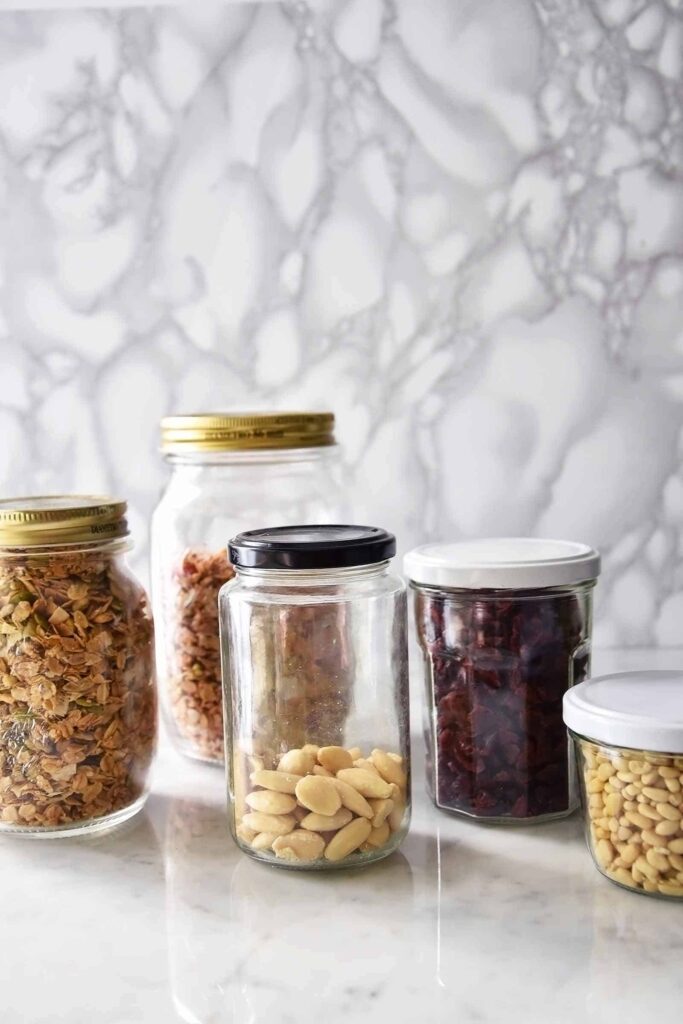
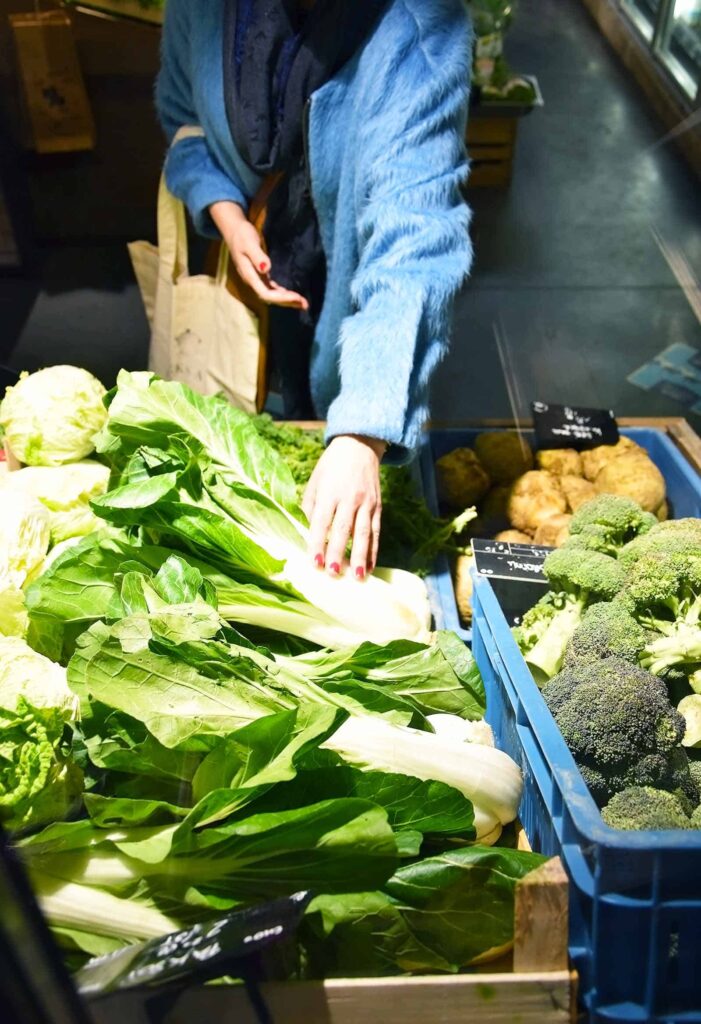
6. USE LOOSE LEAF TEA – I drink a lot of tea every day and mostly buy in tea bags for work and use loose leaf at home which I than put in a tea bag. I didn’t realize that the bags have a plastic coating stopping the paper to dissolve in the tea (duh). I also read that even some of the silky bags are actually thin plastic. I read that muslin bags are really the only ones plastic free and lucky me most of my favourite brands use muslin. But I have a ton of stainless steel strainers I can use instead so why not switch, it’s also cheaper. And I can compost the leaves as well instead of trashing them.
7. EAT LOCAL & SEASONAL – I ONLY eat seasonal produce. But not every vegetable or fruit in my basket is grown in Belgium. I can do much better, I will pay more attention to where things are from and if a local alternative exists. I buy at organic and farmers markets when I can, I can make that a standard, just ‘ve to adjust my routine. I shop Fridays after work. The Farm Coop shop in my hood is open till 19.30H so I can make that for sure. You can find your local farmers market in Brussels HERE.
8. PACKAGE FREE LUNCH AT WORK – 3 lunches out of the 5 I buy lunch in the grocery store or deli on the corner of my office building. Almost all is wrapped in plastic coated paper, I can bring in my reusable wrap or bags. Sometimes my store-bought lunch comes with disposable plastic cutlery and paper napkins . I will pay more attention and bring in my own container or wrap and using my own cutlery and cloth napkin at work. Bringing lunch from home is also a solution but I need to be realistic, I don’t often have the time to prep.
9. GROW FOOD YOURSELF – I ve a lovely terrace, in partial shade and not that large (8 by 3 meters). I have space for some containers with flowers and 1 large container where I grown green beans every year. Herbs like rosemary and laurel (bay leaves) do really well but my thyme and oregano keep dying on me. I will take better care of those as buying them every week cut and wrapped in plastic is no longer an option.
10. REDUCE VS RECYCLE – this is a more overall awareness I need to create about choosing NOT TO BUY even when it can be recycled. I want to keep learning about zero waste and the waste issues we face. I didn’t realise the harm of recycling as I never asked myself the question what happens to the recycling. Yes, some of it is reduced to be used again but that process also requires fossil fuel energy, and most still goes to landfills. Reducing paper and plastic waste will make a big impact, so I am game.
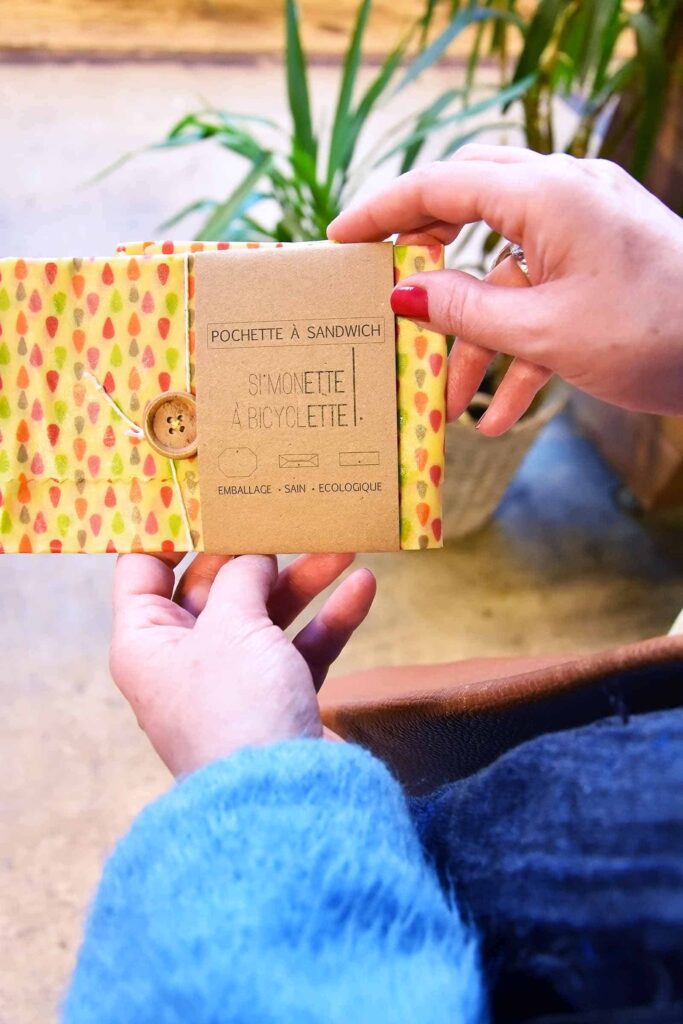

There you go, my 10 goals that I will apply NOW. They are modest but I ‘ve to start somewhere. Analyzing my trash was very helpful and reading about the alternatives but also what actually happens to my trash was eyeopening! I will continue learning and researching tips. Finding out what works for me in my urban setting and busy life. You can follow how I am doing on my Instagram and Facebook stories every Thursday.
Written and photographed by Sandra Slawinski without commercial deals. I took these pictures at LHH studio, Dille & Kamille and Farm Coop organic shop. Thank you Nia, my BFF, for patiently posing for my camera.

